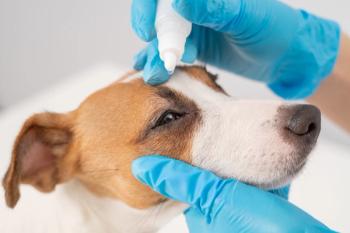
Expect to encounter emerging disease, report says
Washington - By the time this year's graduates reach retirement age, they likely will have witnessed a disease epidemic.
WASHINGTON — By the time this year's graduates reach retirement age, they likely will have witnessed a disease epidemic.
Getting to know infectious diseases
That prediction comes from Dr. Lonnie King, dean of Michigan State University's veterinary college and co-author of the report "Global Risks of Infectious Animal Diseases." King, on sabbatical with the Centers for Disease Control and Prevention (CDC), views the Council for Agricultural Science and Technology report as a "call to action" for veterinary institutions to turn emerging disease training into standard college curriculum.
The job market for DVM-trained disease experts is wide open, King says. With zoonotic and emerging animal diseases rising at rates unforeseen a decade ago, the onus rests largely on veterinarians to shield the world from infectious animal disease spread.
"Surveillance and vigilance is everyone's job, not just veterinarians in large animal medicine," says King, director of the CDC Office of Strategy and Innovation. "I'll guarantee you that new veterinarians graduating from veterinary school will see an epidemic in their lifetime."
Determining a need
The need for disease surveillance is outlined in the report, which examines the economic, social and political impacts of outbreaks as well as the government systems monitoring them. Written by 13 international disease experts, the report acknowledges that the veterinarians now are expected to function as outbreak watchdogs. The chances of a foreign animal disease turning up on a practitioner's doorstop is "logarithmically better than 10 years ago," says Dr. Corrie Brown, a co-author of the report who studies the pathogenesis of infectious diseases in food animals at the University of Georgia's veterinary college. But without proper training, some DVMs will drop the ball on diagnosis. It's already happened, she says.
"Were any prairie dogs diagnosed with monkey pox before the human case? I don't think so," Brown says. "There was also a horse in Florida imported from Argentina that had screwworms in an abscess. The quarantine veterinarian didn't catch it."
The former Plum Island researcher adds: "There's a whole new set of issues for veterinary medicine to address that goes way beyond the technical training that we got in school. These diseases are coming; they're front and center."
Unfair accountability
According to the report, Brown is right. And although local monitoring rests largely on practitioners' shoulders, the 16-page paper acknowledges the role government surveillance programs play in the application of animal disease-control strategies: "The surveillance of foreign animal diseases (FAD) requires reporting of suspicious lesions observed by private veterinary practitioners or producers. With current world conditions, however, that mechanism cannot be relied on as the only one to detect an FAD."
While it's impossible to fend off every outbreak, lack of education for veterinarians is an issue. It's unfair to expect practitioners will be able to spot all highly infectious diseases, says Dr. Brian McCluskey, another study contributor and an epidemiologist with the United States Department of Agriculture's Animal and Plant Health Inspection Service.
"We're not going to be able to send everyone to Plum Island to get a dose of foreign animal disease training," he says. "Beyond that, it's up to veterinarians to know the clinical aspects and understand the risks of those introductions are."
Factors affecting disease spread
Any type of unusual medical sign in food or companion animals could be a sign of emerging disease, defined as a new presentation of a previously recognized disease or an existing disease, the report says. A great example is swine fever, McCluskey says. Eradicated in the United States in the 1970s, swine fever is "a real nasty one for the swine industry," he adds.
"It's right up there with foot and mouth disease, which has taken center stage," McCluskey says. "This disease is still out there globally. Intentional introductions to the United States aren't out of the question."
Global movement
Intensive agriculture also put the United States at great risk, the report says. With larger quantities of raw materials moving between countries, stressing animals by pushing them to produce more.
"I'm certainly not suggesting we go backwards," McCluskey says. "But we may be asking for lower immune systems here, opening ourselves up for some types of infectious disease."
Other drivers affecting the emergence or spread of livestock diseases include expansion of the human population, environmental changes, animal species interface as well as husbandry and technological changes, the report adds.
These "underlying factors inherent in modern society are responsible for the increase in emerging diseases," the report says. When predicting a disease outbreak in the United States, it's not a question of if, but when, Brown says.
"We need to be thinking about hearing footprints on the covered bridge," she says. "After all, it could be a zebra."
Newsletter
From exam room tips to practice management insights, get trusted veterinary news delivered straight to your inbox—subscribe to dvm360.




